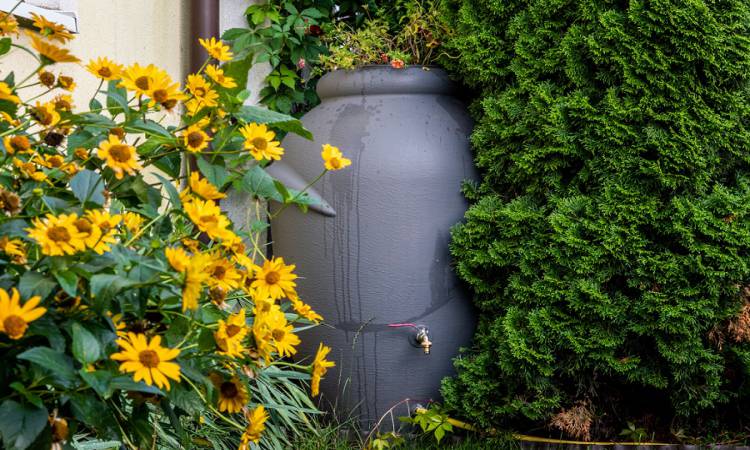 Rainwater tanks help collect and conserve water you can use to clean the house, water the plants and even stay hydrated once you’ve filtered the water. Hence, it’s crucial to keep the rainwater you store clean and fresh at all times.
Rainwater tanks help collect and conserve water you can use to clean the house, water the plants and even stay hydrated once you’ve filtered the water. Hence, it’s crucial to keep the rainwater you store clean and fresh at all times.
If you properly maintain the water quality in the tank, you’ll also extend the life span of your water filters, tank pump, and household appliances for which you use rainwater. As time passes by, leaves, sediments, and other pollutants may find their way into your tank. Therefore, proper cleaning and disinfecting of that container are important. Below is a complete guide on how you can accomplish those two tasks.
Pay Close Attention
When checking and cleaning your water tank, make sure to keep an eye on the following:
- The level of water to avoid running out of water at a very short notice
- The condition of the roof, leaf basket, hatches, and liner so you can repair any sort of damage early
- Pests or insects swimming or flying around the tank
- The clarity of the water at the bottom of the tank since a well-maintained rainwater tank should have a sludge-free and clear bottom
Make Sure The Guards And Strainers Are Working
You can keep your rainwater tank free from debris by installing gutter guards, strainers, and a rainwater diverter. These features all work to ensure that the water remains clear and flows freely into the tank.
When you’re shopping for a new water tank from watertankfactory.com.au or other tank manufacturers, it’s important to ask about the availability of those features or whether the company can help you install them.
Do Basic Maintenance
Perform basic maintenance at least every one to two months, especially during summer. You never know when you’ll experience heavy rainfall. So if you haven’t cleaned your water tank in six months or so, you might end up with dirty water in it.
Here are the steps for basic water tank maintenance:
- Inspect The Roof: Start checking your roof for debris and dirt. You need to clear overhanging branches and trees to prevent them from going into your tank.
- Clean The Gutters Regularly: In doing this, you can simultaneously collect clean rainwater and prevent fires given that dried leaves in your gutters can easily ignite. Installing a gutter mesh or guard can help clear debris away.
- Check The Downpipes And Drainage: Your downpipes and drainage should be clean and clear as much as possible. You can flush them out every 12 months. It’s a good idea to install a first flush diverter and drain points to maximize the runoff quality every time it rains.
- Inspect And Clean The Entry Box: The leaf basket should be cleaned regularly to avoid water contamination, especially if you’re using the water as alternative drinking water.
Remove The Sludge
The organic matter would naturally settle at the bottom of the rainwater tank over time. If this isn’t cleaned out, it turns into sludge. That’s why a critical part of rainwater tank maintenance is removing any residue that’s built up in the container.
Inspection of water tanks should be done every two to three years to check for any accumulation of sediments. If the rainwater tank isn’t clean, harmful bacteria can grow and cause health problems such as stomach upset, vomiting, diarrhea, and infection.
Clean The Interior Of The Tank
When cleaning a tank, you need to open the tap or outlet valve first to drain the remaining water. You have to wash and flush the container until there are no longer any traces of detergent or cleaning agent in the water.
The cleaning process of a rainwater tank normally includes vacuuming the dirty water using a hose and a water pump. If the tank is large enough to enter, draining the rainwater from the tank and hose and then sweeping it out is possible.
However, climbing into a rainwater tank can be dangerous. Never force yourself to enter a tank because not all types can be accessed. You can hire a rainwater tank professional to clean the tank’s interior.
Disinfecting Water Tanks
According to the World Health Organization (WHO), the most common method of disinfecting water tanks is chlorination. The chlorine can be delivered in different ways, though it’s often done using high-strength calcium hypochlorite (HSCH). When HSCH is combined with water, it liberates about 60% to 80% chlorine, disinfecting the water tank.
Conclusion
Even though rainwater is inherently safe to use, if you collect and store it in a badly maintained tank, you’ll eventually end up with dirty water. That’s why it’s absolutely necessary for you to clean and disinfect your tank on a regular basis by following the tips above. In doing so, you can ensure that you and your family will continue to have access to an excellent supply of clean water and steer clear of water-related health issues.

